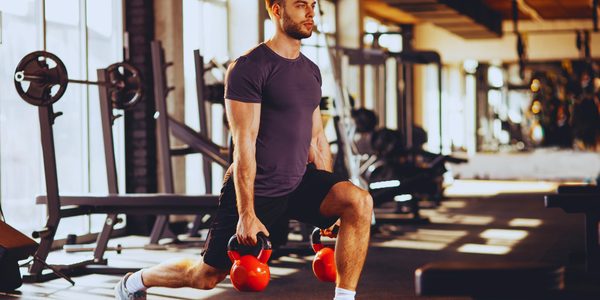Osteoporosis Specialist: These 5 Exercises Build Bone Density at Any Age
Discover expert-recommended Bone Strength Exercise routines that prevent bone loss and boost density. Learn safe, effective workouts suitable for all fitness levels and ages.

https://www.youtube.com/watch?v=qraveMSLoxE
Did you know that about 30% of postmenopausal women face osteoporosis? This fact shows how vital it is to take care of our bones. Bones are always being rebuilt and broken down. But as we get older, this rebuilding slows down. That's why weight-bearing activities are key to keeping our bones strong.
Preventing osteoporosis is not just about aging well. It's about staying strong, independent, and enjoying life. As we age, doing bone-strengthening exercises becomes more important. They help fight the natural bone loss that happens over about 10 years.
Learning how to protect and strengthen your bones can greatly improve your health. There are many ways to support bone health at any age. From resistance training to specific weight-bearing exercises, there are many options.
Key Takeaways
- Bone density naturally declines with age, making proactive exercise essential
- Weight-bearing exercises are critical for maintaining bone strength
- Resistance training can help stimulate bone rebuilding
- Exercise benefits bone health throughout all life stages
- Consistent, targeted activities can help prevent osteoporosis
Understanding Osteoporosis and Bone Health Fundamentals
Bone health is key to healthy aging. It needs careful attention and action. Osteoporosis makes bones weak and prone to breaks, affecting millions in the U.S.
What Happens to Bones During Osteoporosis
Bones lose density and strength with osteoporosis. About 10 million Americans have it, with women making up 80%. The bone repair process fails, leading to more loss than gain.
- Peak bone mass is reached by early 30s
- Bone density starts to drop after that
- Hormonal changes speed up bone loss
Risk Factors and Early Detection Methods
Knowing risk factors helps catch osteoporosis early. Calcium intake and Vitamin D supplementation are vital for bone health.
| Risk Factor | Impact |
|---|---|
| Age | Increased risk after 50 |
| Gender | Women at higher risk (80% of cases) |
| Lifestyle | Smoking, low activity |
Role of Exercise in Bone Health Management
Exercise is a strong ally for bone health. Weight-bearing exercises can boost bone density by 1-2%. This is a natural way to keep bones strong.
- Regular weight-bearing activities
- Progressive resistance training
- Balance and mobility exercises
Bone Strength Exercise: Essential Weight-Bearing Activities
Weight-bearing activities are key for strong bones. These exercises put stress on your bones through controlled movements. This helps keep your bones dense and strong.
There are many types of weight-bearing activities that are good for your bones. Here are some effective ones:
- Walking (even brisk walking)
- Dancing
- Jogging
- Low-impact aerobics
- Stair climbing
- Hiking
- Racket sports like tennis and pickleball
Studies show how important these exercises are. Nurses who walked four hours a week cut their hip fracture risk by 41%. Doing strength training twice a week can also help bones grow a lot.
| Exercise Type | Bone Density Impact | Recommended Frequency |
|---|---|---|
| Walking | Moderate Improvement | 4+ hours/week |
| Strength Training | High Improvement | 2 times/week |
| Hiking | Targeted Hip Density | 3-4 times/month |
The time it takes to see bone growth varies. Young adults might see changes in three to four months. But older people or those with osteoporosis might need more time. Consistency is key in any bone-strengthening exercise program.
Always talk to a healthcare professional before starting a new exercise plan. This is very important if you have health issues or concerns about your bones.
Safe Exercise Guidelines for Different Mobility Levels
Creating a good exercise plan for bone health needs a personal touch. It's important to think about how well someone can move. Balance Exercises and Fall Prevention are key for all fitness levels.
It's vital to tailor exercises to keep everyone safe and boost bone strength. Functional training helps make workouts fit each person's needs.
Low Mobility Function Recommendations
Even with limited mobility, special exercises can help a lot:
- Seated resistance training with light weights
- Gentle range-of-motion exercises
- Chair-based balance exercises
- Isometric muscle engagement techniques
Moderate Mobility Exercise Adaptations
Those with moderate mobility can try more active exercises:
- Standing resistance training with moderate weights
- Low-impact weight-bearing activities
- Progressive balance challenge routines
- Controlled movement sequences
High Mobility Training Protocols
People with high mobility can do more intense exercises:
- High-intensity resistance training
- Impact exercises like controlled jumping
- Advanced balance coordination drills
- Multi-directional movement challenges
The American College of Sports Medicine suggests 2-3 days of resistance training a week. Focus on proper technique and slow progress to avoid falls.
Conclusion
Bone strength exercise is more than a quick fix. It's a long-term commitment to your health. Studies show that regular exercise can greatly improve bone density at any age. A 2015 study found that resistance training boosted lumbar spine BMD by 1.82% in postmenopausal women.
Osteoporosis prevention needs a smart plan. The World Health Organization suggests muscle-strengthening activities for adults, mainly those over 65, at least twice a week. Adding progressive resistance exercises and weight-bearing activities helps fight bone density loss and keeps your bones healthy.
Your exercise plan should be tailored and flexible. Different life stages require different approaches to strengthening bones. Start with low-impact activities for beginners and move to high-intensity training as you get more advanced. The goal is to keep moving and challenge your body while respecting your current fitness level.
Building bone density is a complete process. Exercise is key, but don't forget to talk to healthcare professionals, eat right, and stay active. This will help protect your bones and improve your life quality. Begin your bone health journey today – your future self will thank you.
FAQ
What is osteoporosis and how does it affect bone health?
Osteoporosis makes bones weak and fragile. This makes them more likely to break. Bones lose density, becoming porous and brittle.
This increases the risk of fractures, mainly in the hip, spine, and wrist. It happens when bone loss is faster than bone formation, which gets worse with age.
At what age should I start worrying about bone health?
Start caring for your bones early, from childhood and adolescence. Peak bone mass is usually reached by age 30. After that, bone density starts to decline.
But, it's never too late to protect and strengthen your bones. You can do this through exercises, proper nutrition, and lifestyle choices.
What are the best exercises for improving bone density?
The best exercises are weight-bearing and resistance training. Examples include:
- Brisk walking
- Jogging
- Dancing
- Strength training with weights
- Stair climbing
- Tennis
- High-impact aerobics
How often should I do bone-strengthening exercises?
Do at least 30 minutes of weight-bearing exercise 3-4 times a week. Do resistance training 2-3 times a week, focusing on big muscle groups. Being consistent is key to improving bone density.
Can I prevent osteoporosis if it runs in my family?
While genetics matter, you can lower your risk. Do regular weight-bearing exercises, eat enough calcium and vitamin D, and do strength training. Keep a healthy weight and avoid smoking and too much alcohol.
Are there safe exercises for people with low mobility?
Yes! People with low mobility can try:
- Seated resistance band exercises
- Gentle chair yoga
- Light hand weight training
- Water aerobics
- Walking with assistance
- Balance and flexibility exercises
How important is nutrition in bone health?
Nutrition is very important for bone health. You need calcium and vitamin D, but also:
- Protein
- Magnesium
- Vitamin K
- Potassium
- Avoid too much sodium and caffeine
What are the early warning signs of bone density loss?
Early signs include:
- Loss of height
- Stooped posture
- Back pain
- Frequent fractures
- Reduced grip strength
- Decreased mobility
Get regular bone density screenings, which are recommended for people over 50 or with risk factors.
Can men develop osteoporosis?
Yes, men can get osteoporosis too. About 20% of cases are in men. Age, low testosterone, certain meds, and lifestyle factors can increase risk.
How quickly can I improve my bone density through exercise?
Improvements in bone density take time. You can see changes in 6-12 months with regular exercise. But, the biggest benefits come from long-term exercise and healthy living.
Source Links
- How to Build Bone Density | National Gaucher Foundation
- Exercise for bone health
- Exercise for Bone Health: A Call to Action - Society for Women's Health Research
- Building Strong Bones: Five Things to Know About Osteoporosis - Bone Health
- 8 Weight-Bearing Workouts for Stronger Bones
- Exercise and Bone Health - OrthoInfo - AAOS
- Exercising with osteoporosis: Stay active the safe way
- Position Statement: Exercise Guidelines for Osteoporosis Management and Fall Prevention in Osteoporosis Patients
- Exercise for individuals with osteoporosis
- Strong, steady and straight: UK consensus statement on physical activity and exercise for osteoporosis
- The Role of Strength Training in Preventing Osteoporosis: Functional Exercises and Evidence-Based Benefits
- Effects of Resistance Exercise on Bone Health
- Physical Activity for Best Bone Health
👉 Join the Active Man Community
Get expert tips, workout guides, nutrition hacks, and the latest trends delivered straight to your inbox every week. No spam — just actionable insights to help you live stronger, healthier, and better.





